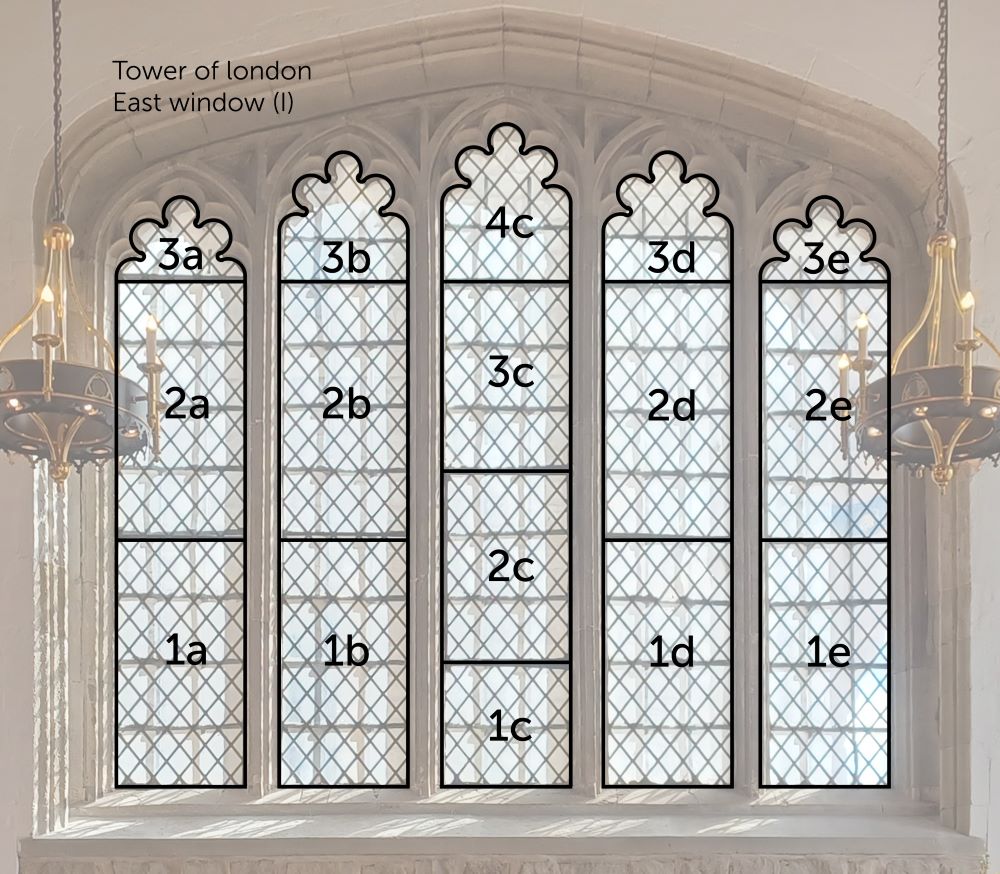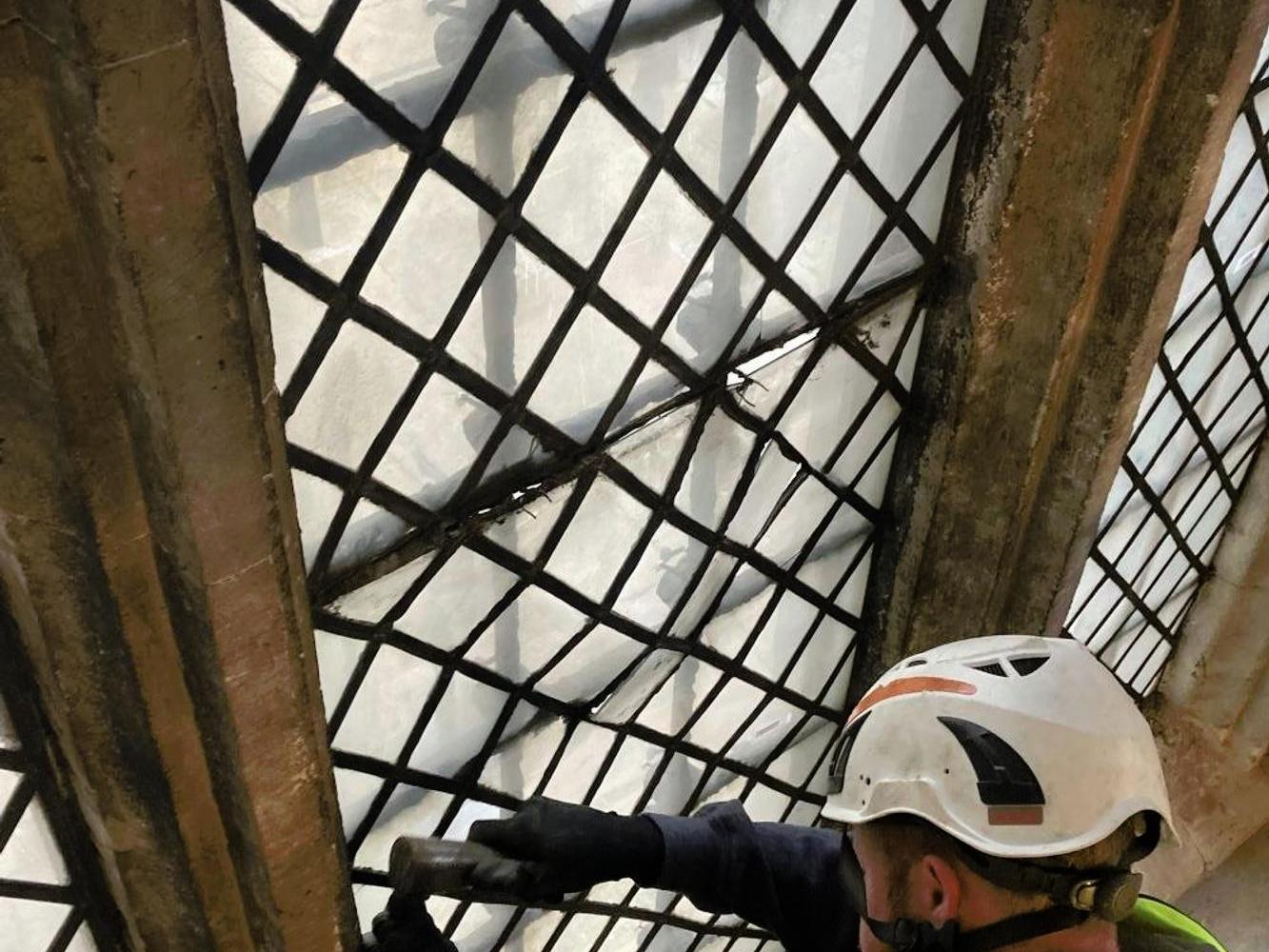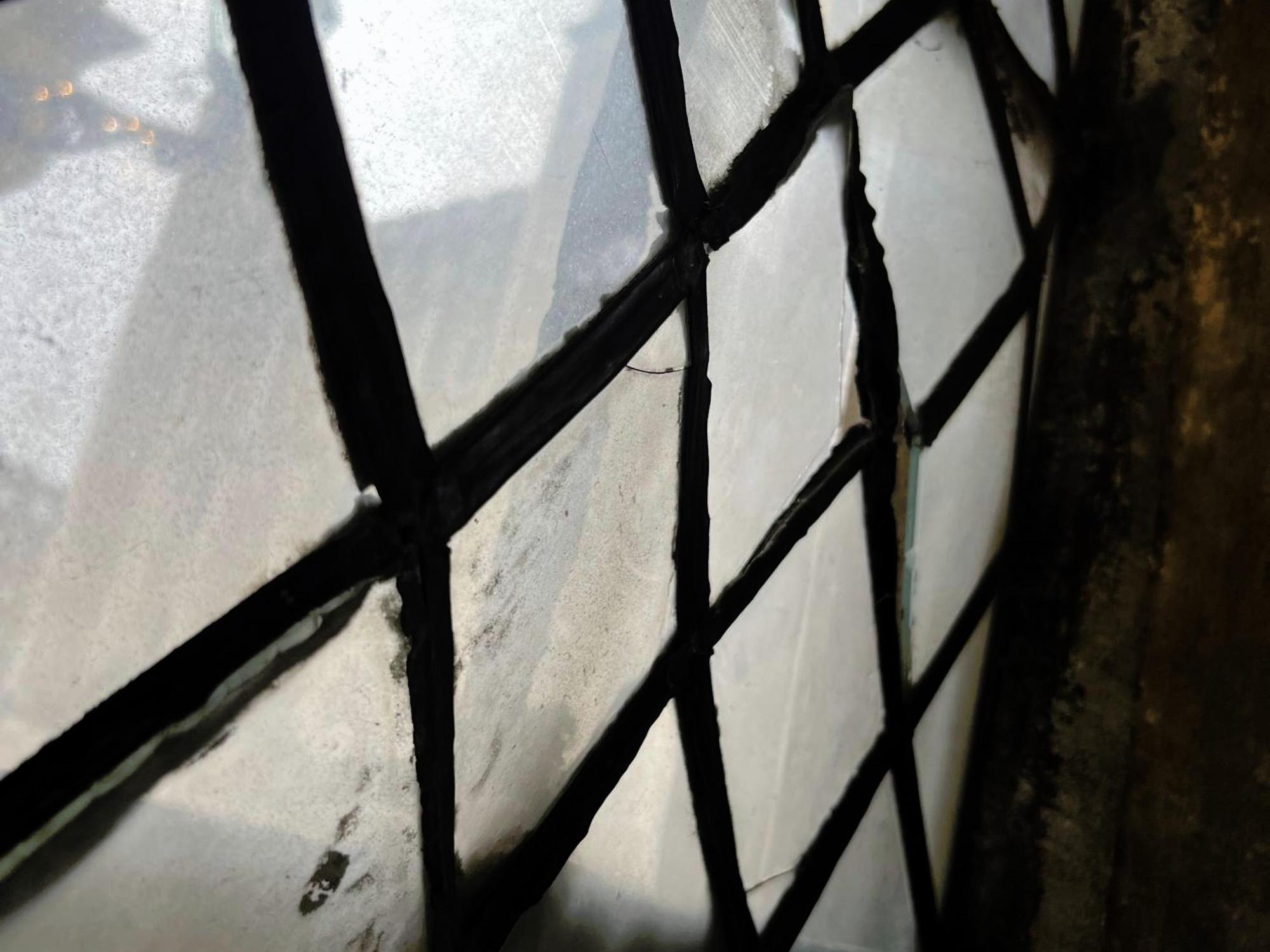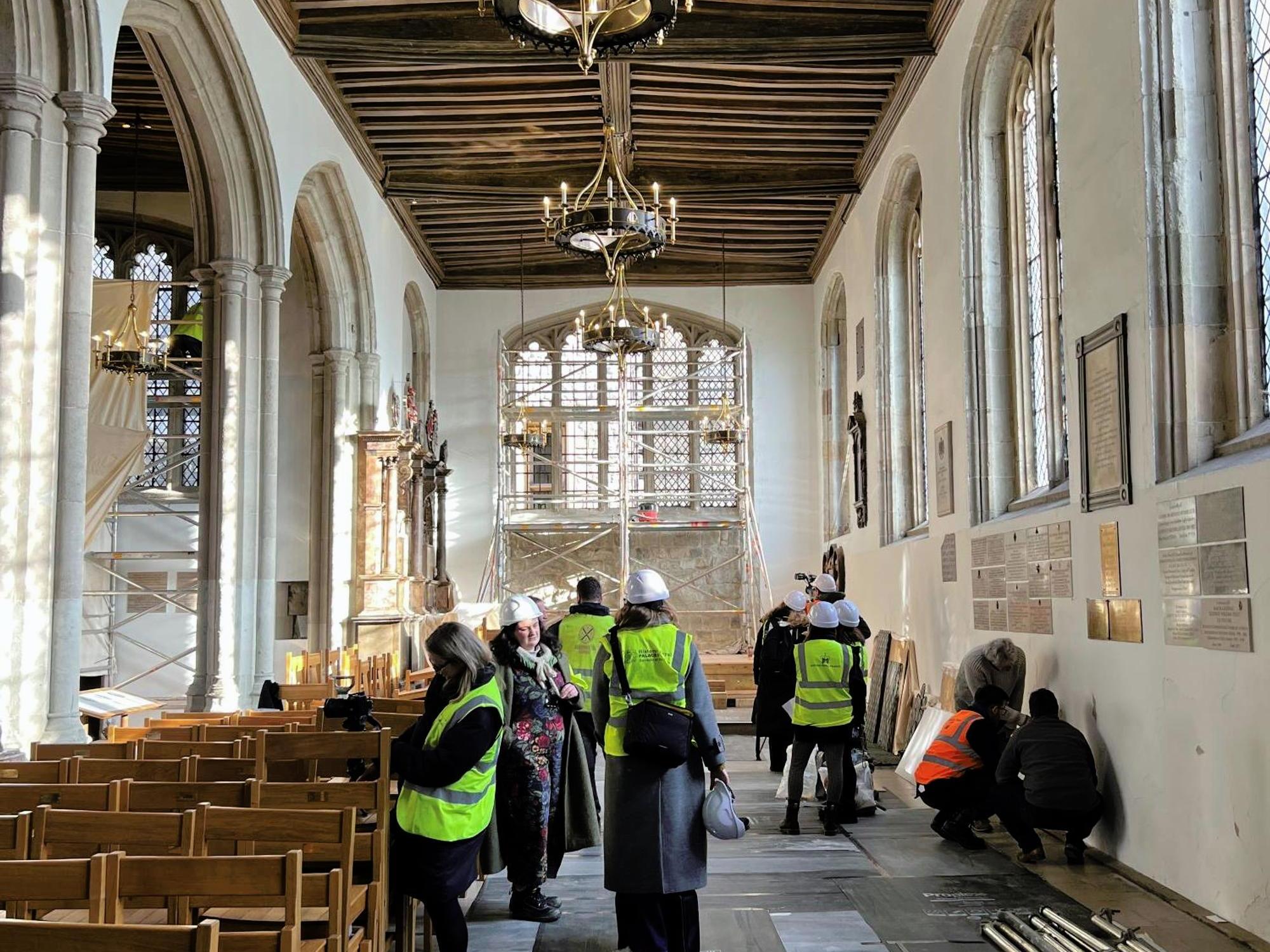Conserving History at the Tower of London
A skilled team of conservators from Holy Well Glass carefully undertook the delicate task of removing the 100-year-old windows from the Chapel of St Peter ad Vincula. This work forms part of an ongoing conservation project designed to protect this historic site, located within the Tower of London.
The Chapel of St Peter ad Vincula holds a significant place in England's history. Records indicate a chapel has stood on this site for over a thousand years, predating the iconic White Tower. The current structure, built by Henry VIII, serves as both a Chapel Royal and a Royal Peculiar, falling directly under the jurisdiction of the Monarch. It is also the final resting place of three Queens of England: Anne Boleyn, Catherine Howard, and Lady Jane Grey. As the parish church of the Tower of London, one of the most visited heritage sites in the country, its conservation is of paramount importance.
Restoring Stability to the East Window
The primary focus of the current conservation project is to restore the stability of the east window above the high altar. This intricate window, divided into 16 separate panels, each holds hundreds of individual panes of glass together within a lead matrix. Over time, this lead framework had bowed and become brittle, placing the entire window at risk of collapse. To prevent further deterioration, the decision was made to remove the entire east window for studio conservation and re-leading.

The east window, divided into 16 separate panels
The Removal Process
Removal of the historic window was a highly delicate operation. The hard cement mortar that sealed the window to the surrounding masonry was carefully chipped away using tungsten-tipped chisels. Copper ties that affixed the panels to the external ferramenta were cut, allowing the panels to be eased out of their openings one by one. Templates were meticulously scribed to ensure a precise fit during the re-leading process. In the interim, the openings were securely boarded with solid polycarbonate sheets featuring faux diamond quarries to maintain the chapel's aesthetic for visitors.

The removal process involved cutting the copper ties affixed the panels to the external ferramenta

Detail of the chapel’s window opening during restoration, showcasing the careful craftsmanship involved in preserving its historic character
Studio Works: Conservation in Progress
Once transported to Holy Well Glass's studio in Wells, the panels underwent a thorough conservation process. Pre-conservation photographs were taken to document their condition, and two wax rubbings of the lead matrix were created for each panel, one to lay out the glass pieces once dismantled and the other to guide the re-leading process.
The cleaning process involved a 50:50 mixture of ethanol and de-ionised water to gently remove dirt and debris. Broken panes were repaired using the copper foil repair method, first developed by Tiffany, where a thin adhesive-backed copper strip is applied to each side of the break and soldered together.
For re-leading, the panels were fitted with lead came that matched the original in profile and heart depth. Weatherproofing was achieved using traditional linseed oil-based leaded light cement. Finally, new soft annealed copper ties were soldered to the leadwork to affix the panels to the ferramenta.
Re-Fixing the Panels: Looking Ahead to Summer
This summer, the restored panels will return to the Chapel of St Peter ad Vincula. Once on site, the temporary boarding will be removed, and the panels will be carefully eased back into their original openings. Copper ties will be affixed to the ferramenta and neatly dressed, with the perimeter pointed using lime mortar to replace the previously used hard cement mortar.

A Quote from Jack Clare ACR
Reflecting on the significance of this project, Jack Clare ACR, Director of Holy Well Glass, shared his thoughts:
It is a privilege to work at the Chapel Royal of St Peter ad Vincula, a site with such extraordinary history. At Holy Well Glass, we work on historic sites across the nation, but this project, working directly over the burial sites of three Queens of England, requires acute sensitivity for the fabric. The work to stabilise the east window over the high altar will conserve the fabric for generations of future worshippers and visitors alike to enjoy.
